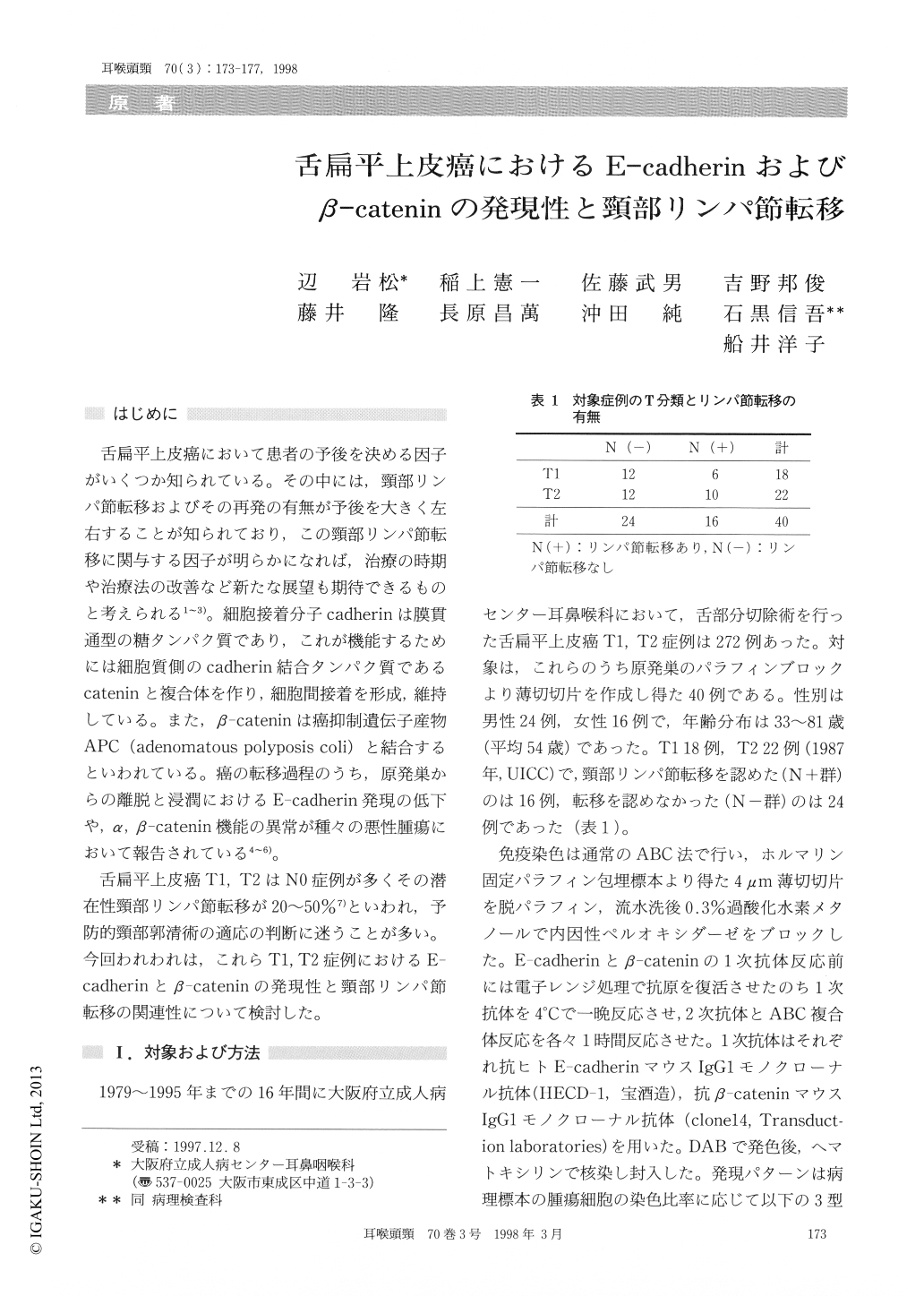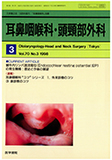Japanese
English
- 有料閲覧
- Abstract 文献概要
- 1ページ目 Look Inside
はじめに
舌扁平上皮癌において患者の予後を決める因子がいくつか知られている。その中には,頸部リンパ節転移およびその再発の有無が予後を大きく左右することが知られており,この頸部リンパ節転移に関与する因子が明らかになれば,治療の時期や治療法の改善など新たな展望も期待できるものと考えられる1〜3)。細胞接着分子cadherinは膜貫通型の糖タンパク質であり,これが機能するためには細胞質側のcadherin結合タンパク質であるcateninと複合体を作り,細胞間接着を形成,維持している。また,β-cateninは癌抑制遺伝子産物APC(adenomatous polyposis coli)と結合するといわれている。癌の転移過程のうち,原発巣からの離脱と浸潤におけるE-cadherin発現の低下や,α,β-catenin機能の異常が種々の悪性腫瘍において報告されている4〜6)。
舌扁平上皮癌T1,T2はNO症例が多くその潜在性頸部リンパ節転移が20〜50%7)といわれ,予防的頸部郭清術の適応の判断に迷うことが多い。今回われわれは,これらTl,T2症例におけるE-cadherinとβ-cateninの発現性と頸部リンパ節転移の関連性について検討した。
The expression of E-cadherin and β-catenin in the patients with squamous cell carcinoma of the tongue (T1, 2) was examined by immunohisto-chemistry. E-cadherin and β-catenin expression in the tumor was graded as positive (+), heterogene-ous (±) and negative (-) respectively. The reduction of β-catenin expression and of E-cadherin was found in 67% of cases. Regarding the clinical fea-tures, the reduction of E-cadherin expression was significantly associated with cervical lymph node metastasis (p<0.05). Futhermore, the freqency of lymph node metastasis in E-cadherin (-) /β-catenin (-) tumors (70%) were higher than in E-cadherin (+) /β-catenin (+) tumors (8%) (p<0.01) . These results suggested that E-cadherin and β-catenin can be utilized as a diagnostic parameter which predicts the high incidence of occult cervical metastasis in squamous cell carcinoma of the tongue.

Copyright © 1998, Igaku-Shoin Ltd. All rights reserved.


